I read that every year, at least 1.3 billion tons of produce rot in transport. Think of the irony of this. The modern-day “breadbaskets” of the USA are experiencing water shortages (partly) because they have shipped a vast quantity of water out of their regions to the rest of the country (via produce). Yet nearly one billion tons (which is hundreds of billions of gallons) of water simply evaporate when some of that produce spoils.
This is madness.
I’m not sure why the bulk of food production in the USA shifted from the east to the west but it’s bizarre when you really think about it. For most of the modern era, the west has been a total desert – and additionally abused by really pathetic agricultural practices that caused the dust bowl in the 1930s and just got worse after WW2 when chemical farming was put into practice.
But somehow they kept pushing and forcing the land to produce things; mostly of marginal quality but usually far better than imported produce. And so a dependence developed on these places. Now, weather and time have decided that things may have to change soon. While statistics state that half of the world’s population will need to source food outside of their borders by 2050, it hardly seems this will be possible with a lack of stable weather conditions. Supply chains are already weakening. Does it really make sense to keep assuming that someone is going to ship us all food forever?
Nope. It doesn’t.
And although governments will always try to keep the masses fed, we may not like what they have to offer. Why would we? They are going to offer whatever foodstuffs they can get grown quickly and cheaply. This almost always means no nutritional content, no satisfaction (which is one rarely discussed reason so many people are overweight), and little variety. Corn, soy, a few leafy greens, “alternative proteins” (highly processed peas, “food grade” insects, low quality meats and eggs)…that’s it.
We have to stop thinking “grocery store shopping” and think about a new yet ancient way of “decentralized shopping”…yes, it’s not actually new. No one called it “decentralized” – it was just normal. Everyone grew (at different scales) to eat and to trade.
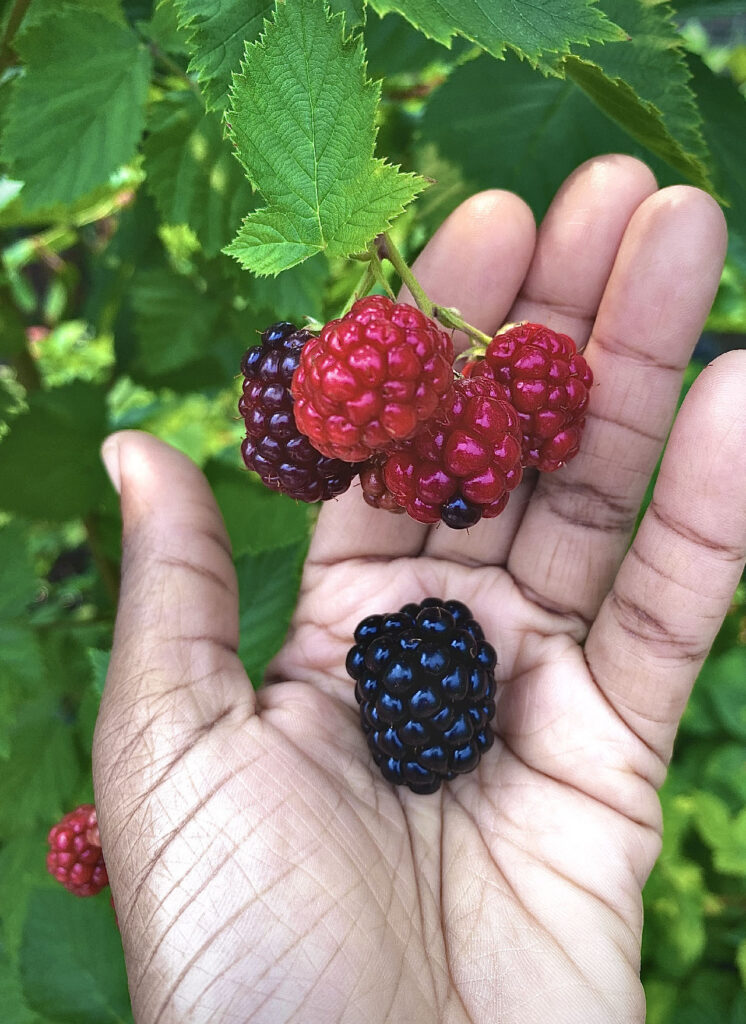
The blackberries are just amazing. 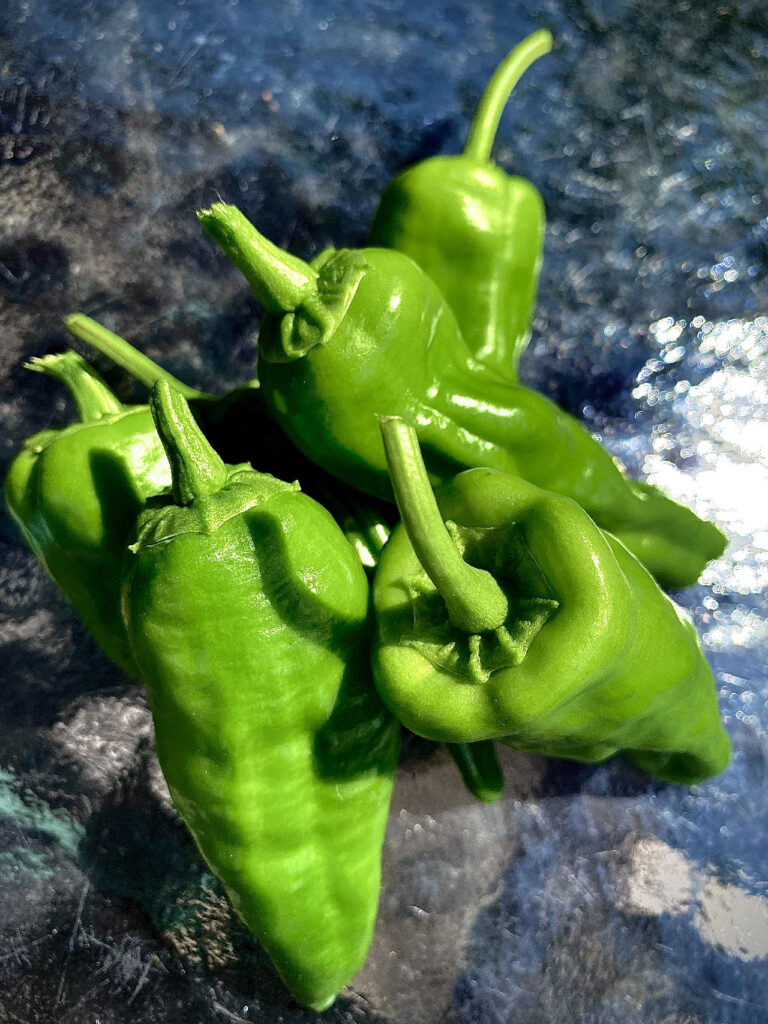
Heirloom frying peppers. They are supposed to be (mostly) mild but they’re all coming in spicy so far. Not sure why. 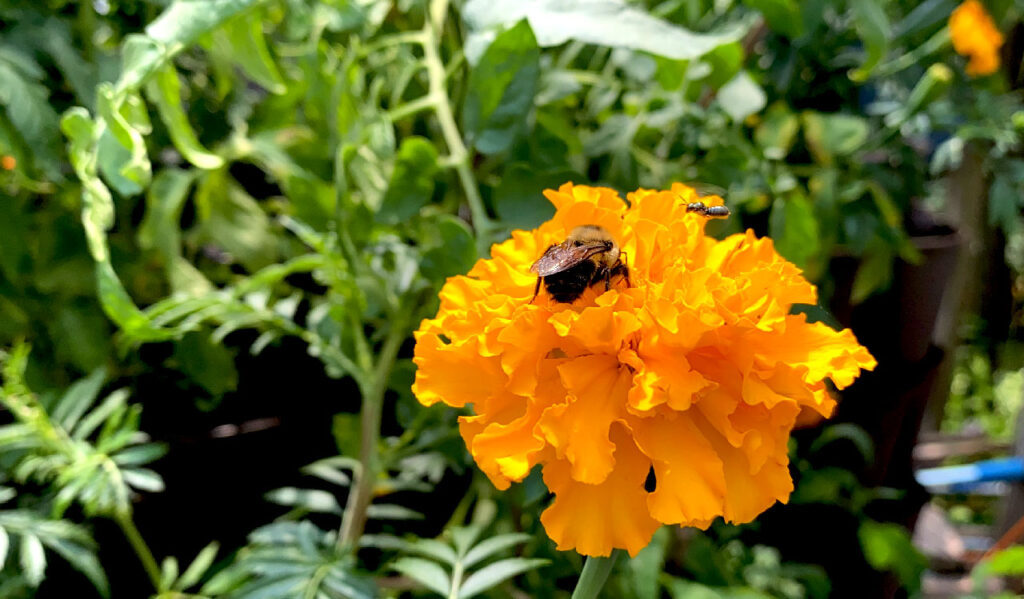
We have so many pics of this happy Bee working with the giant marigolds. Love it. 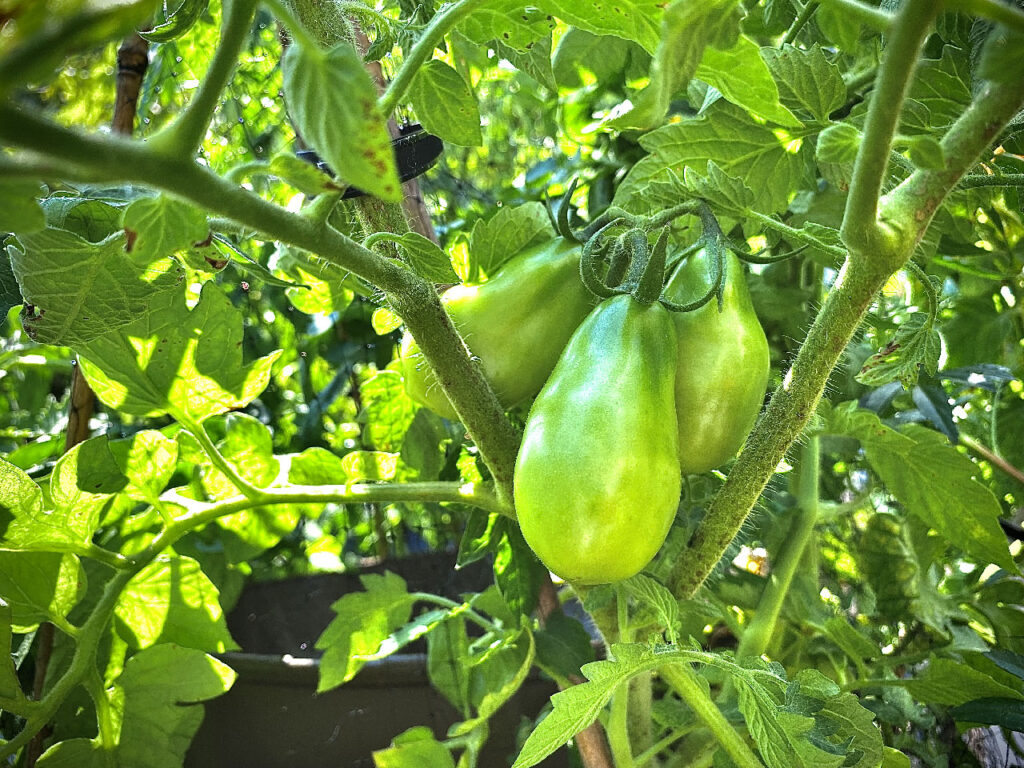
Classic organic Roma tomatoes coming in.
If everyone started growing just a few plants each year – anything they’re interested in – our country could begin this crucial transition away from centralized farming. It takes awhile to get used to growing so there’s no better time to get started than now when we still have some access to a decent food supply, albeit centralized.
Think of the things that are rarely discussed that need to be done. “Libraries” of plants for grafting and general propagation are needed.
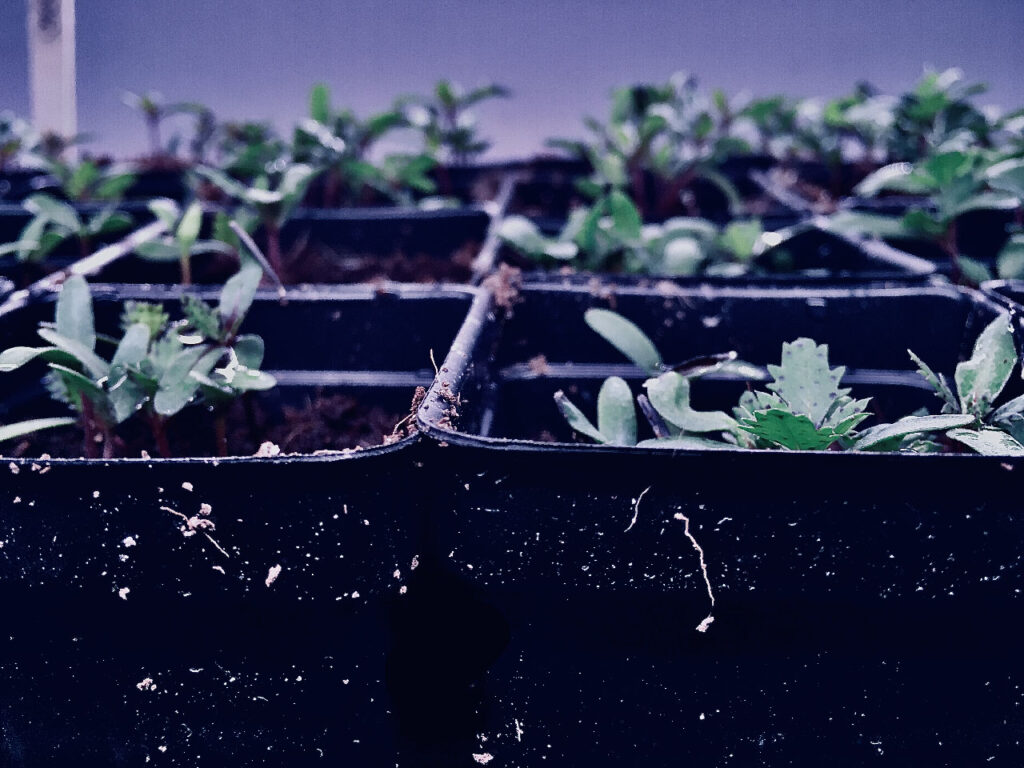
Specialty plant nurseries need to be even more prolific (although there are more than before and it’s a wonderful thing).
That way we can promote growing even more (to the beginner grower, to growers who want to expand but have limited resources like time and labor, to growers who are ready to go large-scale for a community or for local sustainable food processing)…and also when a natural disaster occurs in one region, other regions can pick up the slack and also replenish the region that sustained damage.
For instance, recently coffee fields in Brazil have taken a hit due to unusually cold temperatures. Imagine if there were high tunnel and greenhouse “libraries” in around the world – including the USA – that are propagating those plants. They would continue production and be able to send well established seedlings back to Brazil and other places. The devastation would be reduced.
Almond trees are being ripped up and ground into mulch in the west due to a lack of water.
Yet there are thousands of acres of unused land in other places. If there was an informal yet effective means of communication, transport, and crowdfunding or investing for transport and maintenance, these trees could possibly be reestablished or at least propagated widely and redistributed.
In the north, we grow peppers as annuals because there’s no choice: when the cold hits that’s it – the plant is done. But what if there was a means to transport the best of plants to warmer regions where peppers could grow almost year-round?
Beginner gardeners could get plants already in production.
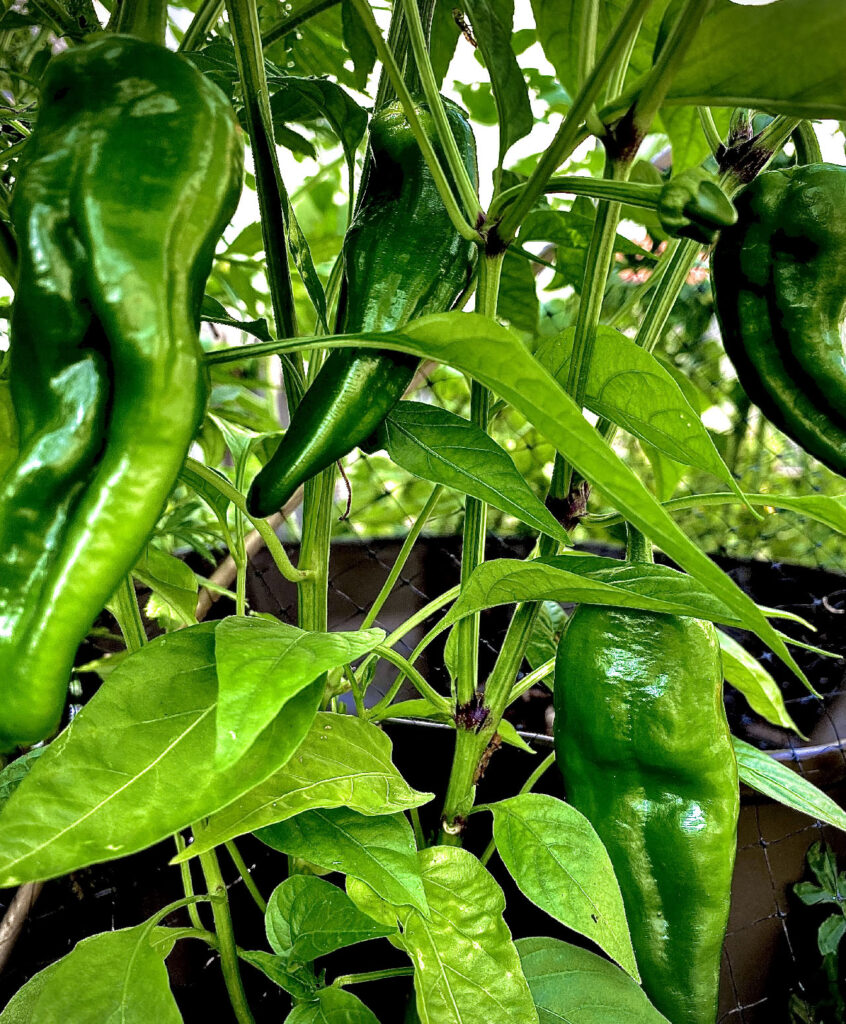
These are not comprehensive examples I realize but hopefully I’m making a point. These are things we can actually do, with all manner of crops. These are things that merit discussion, that merit experimentation. And I believe these are things that used to happen long ago.
I think the “trading post” was far more than a cedar plank storefront, especially in pre-Columbian North America.

